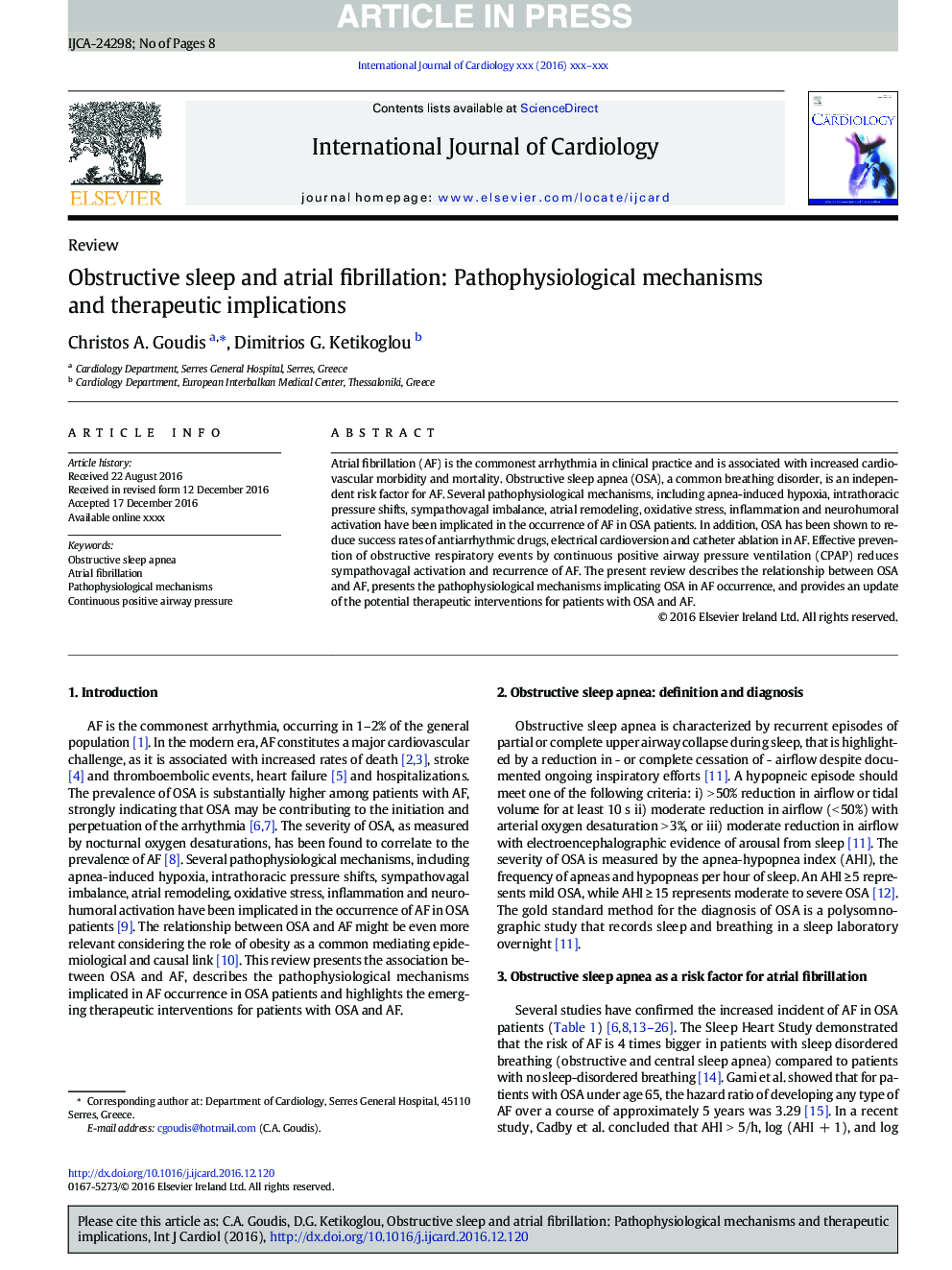| Article ID | Journal | Published Year | Pages | File Type |
|---|---|---|---|---|
| 5604769 | International Journal of Cardiology | 2017 | 8 Pages |
Abstract
Atrial fibrillation (AF) is the commonest arrhythmia in clinical practice and is associated with increased cardiovascular morbidity and mortality. Obstructive sleep apnea (OSA), a common breathing disorder, is an independent risk factor for AF. Several pathophysiological mechanisms, including apnea-induced hypoxia, intrathoracic pressure shifts, sympathovagal imbalance, atrial remodeling, oxidative stress, inflammation and neurohumoral activation have been implicated in the occurrence of AF in OSA patients. In addition, OSA has been shown to reduce success rates of antiarrhythmic drugs, electrical cardioversion and catheter ablation in AF. Effective prevention of obstructive respiratory events by continuous positive airway pressure ventilation (CPAP) reduces sympathovagal activation and recurrence of AF. The present review describes the relationship between OSA and AF, presents the pathophysiological mechanisms implicating OSA in AF occurrence, and provides an update of the potential therapeutic interventions for patients with OSA and AF.
Keywords
Related Topics
Health Sciences
Medicine and Dentistry
Cardiology and Cardiovascular Medicine
Authors
Christos A. Goudis, Dimitrios G. Ketikoglou,
